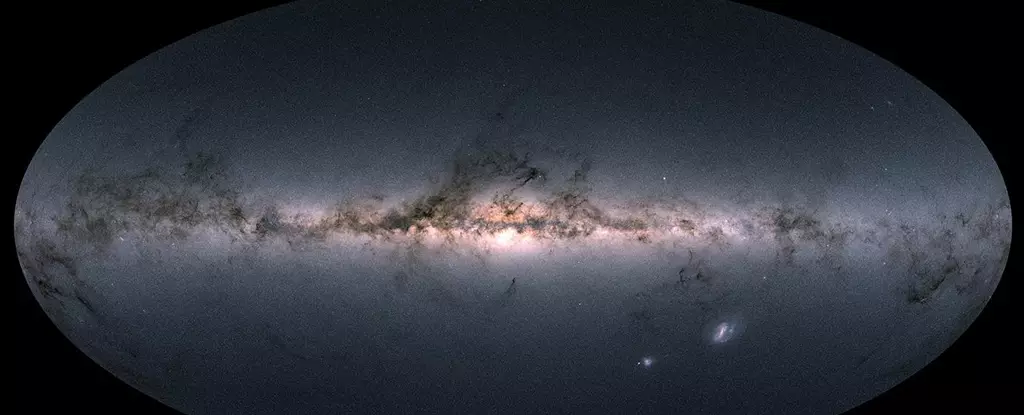The Milky Way’s massive size has been sculpted over time by collisions and mergers with other galaxies, an intricate and messy process that is not unique to our galaxy. This phenomenon can be observed happening with various galaxies throughout the Universe, as they interact and influence each other’s trajectories. Presently, the Milky Way is slowly consuming its two satellite galaxies, the Large and Small Magellanic Clouds, leading them towards an inevitable absorption into our galaxy’s vast expanse.
Previously, it was believed that the last major merger affecting the Milky Way occurred between 8 to 11 billion years ago. However, recent research supported by the European Space Agency’s Gaia mission suggests a more recent timeline, indicating that the significant collision took place less than 3 billion years ago. Gaia, launched in 2013, has been diligently mapping over 1 billion astronomical objects, predominantly stars, by repeatedly measuring their positions and motions with exceptional precision.
One of the key indicators of past mergers within the Milky Way is the presence of “wrinkles” in its structure. These wrinkles, caused by the collision and integration of other galaxies with our own, manifest as various morphological features such as phase space folds, caustics, chevrons, and shells, which affect the trajectories of stars within our galaxy. By meticulously analyzing the positions and velocities of stars, Gaia has successfully identified these wrinkles, unveiling crucial insights into the Milky Way’s history of major cosmic events.
In addition to the wrinkles, scientists have focused on other evidence related to the Milky Way’s last major merger, including an Fe/H-rich region characterized by stars exhibiting highly eccentric orbits. The Fe/H ratio serves as a distinct chemical marker, and the presence of stars with matching chemical compositions and unique orbits implies a shared origin – often referred to as ‘the Splash.’ These stars are believed to have undergone heating and orbital disruptions due to the merger, forming a distinctive cluster within the Milky Way.
Two primary theories have emerged to explain the merger evidence found within the Milky Way. The Gaia Sausage/Enceladus (GSE) scenario suggests that a dwarf galaxy collided with the Milky Way’s proto-disk billions of years ago, while the Virgo Radial Merger (VRM) theory proposes a more recent collision less than 3 billion years ago. The distinguishable substructures and wrinkles observed in Gaia’s data provide substantial support for the VRM scenario, indicating a more complex merger history involving multiple entities and events.
As astronomers continue to analyze the evolving data from Gaia, the overall understanding of the Milky Way’s past and its intricate mergers continues to evolve rapidly. The narrative surrounding the galaxy’s formation and transformations is continually being rewritten and refined, shedding light on the complex interplay between galaxies and the factors that shape our cosmic environment. Through ongoing research and simulations, scientists aim to unravel the specific details of each merger event and the lasting impact they have had on the Milky Way’s structure and composition.
The groundbreaking insights provided by Gaia’s data are revolutionizing our perception of the Milky Way’s history and the processes that have sculpted our galactic home. By delving deep into the intricacies of galactic mergers and their aftermath, astronomers are paving the way for a deeper understanding of how galaxies form, evolve, and interact with each other within the vast tapestry of the Universe. As we continue to unravel the mysteries of our cosmic neighborhood, Gaia’s mission stands as a beacon of discovery, illuminating the path towards unlocking the secrets of our galactic origins.


Leave a Reply